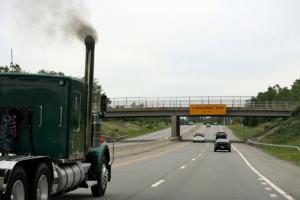American Thoracic Society Applauds EPA Protective Standard on Particulate Matter (PM) Pollution
The science is clear: the previous EPA PM standard was not protective of public health, according to the American Thoracic Society (thoracic.org).
PM pollution, or soot, is a dangerous form of air pollution. Exposure to particulate matter is harmful for everyone, but it is especially dangerous for persons with underlying respiratory and cardiovascular diseases. Particle pollution is well-known to cause asthma and COPD exacerbations, heart attacks, hospitalizations, and death. The science is clear: the previous EPA PM standard was not protective of public health.
"A more protective annual standard will save lives, reduce asthma and COPD exacerbations, and improve the quality of air for everyone," says Alison Lee MD, chair of the ATS Environmental Health Policy Committee. "While I am disappointed that EPA did not go further to address the daily PM standard, today's action by EPA is important progress and will bring cleaner air to communities across the U.S."
In addition to a more protective annual PM standard, EPA also issued new threshold levels for the air quality index, changing the pollution levels needed to trigger some air quality alerts. "The new cut points for the air quality index are a step towards improved communication regarding the risks of particle pollution exposure, particularly for those most susceptible to the harms of air pollution such as those with chronic respiratory disease and children," says Franziska Rosser MD, MPH - member of the ATS Environmental Health Policy Committee.
Learn more about adverse health impacts of outdoor air pollution, including wildland fires, in the 2023 ATS Health of the Air report. To view the top 25 U.S. cities ranked for PM mortality and lung cancer, visit https://healthoftheair.org/rankings.
The American Thoracic Society (thoracic.org) improves global health by advancing research, patient care, and public health in pulmonary disease, critical illness, and sleep disorders. Founded in 1905 to combat TB, the ATS has grown to tackle asthma, COPD, lung cancer, sepsis, acute respiratory distress, and sleep apnea, among other diseases.
###
Julie Dennehy
Dennehy PR
email us here
Visit us on social media:
Facebook
Twitter
LinkedIn
Instagram
YouTube
Legal Disclaimer:
EIN Presswire provides this news content "as is" without warranty of any kind. We do not accept any responsibility or liability for the accuracy, content, images, videos, licenses, completeness, legality, or reliability of the information contained in this article. If you have any complaints or copyright issues related to this article, kindly contact the author above.

